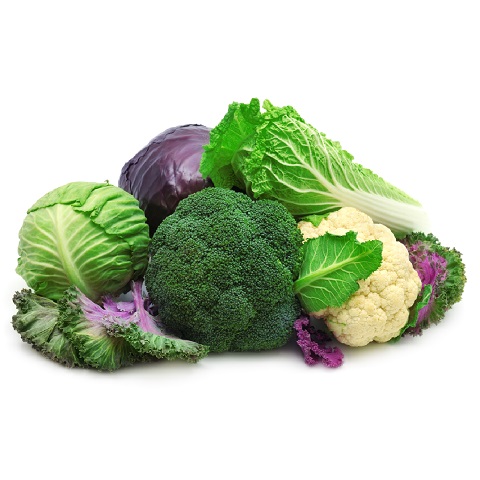| Disease / pest | Damage stage | Management / Chemical | Organic |
|---|---|---|---|
     |
|
Management:
Chemical:
|
- Home
- शेतकऱ्यांसाठी माहिती
- Vegetables
- कोबीवर्गीय
कोबीवर्गीय
Category: Vegetables
- For Farmers
- Nutrients
- Pests
- test
- Documents
For Farmers
|
Life Cycle Of Pest: |
||||
|---|---|---|---|---|
| Description: | Stage 1: Egg | Stage 2: Larvae | Stage 3: Pupae | Stage 4: Adult |
| Mark Of Identification: | ||||
| Life Cycle: |
Management (Pest Control):
| Chemical: | |
|---|---|
| Organic: |
Nutrients
|
Crop Stage Images |
||||||
|---|---|---|---|---|---|---|
| Crop Stage | Germination | Transplanting to plant establish stage | Vegetative Stage | Flower Initiation to 1st picking | Harvesting | |
| Duration (in days) |
10 | 30 | 30 | 80 | ||
|
Nutrients (Kg/ha) |
N | 20 | 80 | 60 | 40 | |
| P | 7.50 | 15 | 7.50 | 7.50 | ||
| K | 10 | 40 | 30 | 20 | ||
Pests
Cabbage AphidsDiamondback MothCabbage Head BorerMustard Saw FlyFlea BeetleTobacco CaterpillarCabbage ButterflyPainted Bug
| Life Cycle Of Pest: |  |
 |
 |
 |
|---|---|---|---|---|
| Description: | Stage 1: Egg | Stage 2: Larvae | Stage 3: Pupae | Stage 4: Adult |
| Mark Of Identification: | ||||
|
Life Cycle: |
Management (Pest Control):
| Chemical: | Apply Diazinon or Lambda cyhalothrin, this will provide a rapid kill of the pest, but there is a need to be repeated if the pest returns. |
|---|---|
| Organic: | Spray G Agro Lecanicillium 5gm/lit 2 to 3 spray at 21 days interval. |
| Life Cycle Of Pest: |  |
 |
 |
 |
|---|---|---|---|---|
| Description: | Stage 1: Egg | Stage 2: Larvae | Stage 3: Pupae | Stage 4: Adult |
| Mark Of Identification: | ||||
|
Life Cycle: |
Management (Pest Control):
| Chemical: | Spray 0.05% Malathion or Quinalphos @ 3ml/lit of water. Spray Bt @ 1-1.5 Kg/ha. |
|---|---|
| Organic: | Spray G Agro Beauveria 5gm/lit + G Agro Metarohizium 5ml/lit 2 to 3 spray at 21 days interval. |
| Life Cycle Of Pest: |  |
 |
 |
 |
|---|---|---|---|---|
| Description: | Stage 1: Egg | Stage 2: Caterpillar | Stage 3: Pupa | Stage 4: Adult |
| Mark Of Identification: | ||||
|
Life Cycle: |
Management (Pest Control):
| Chemical: | For control of grown up larvae apply 5% malathion dust @ 37.5 kg/ha. Spray 250 ml of endosulfan 35EC in 150 litres of the water per ha. |
|---|---|
| Organic: | Spray G Agro Beauveria 5gm/lit + G Agro Metarohizium 5ml/lit 2 to 3 spray at 21 days interval. |
| Life Cycle Of Pest: |  |
 |
 |
 |
|---|---|---|---|---|
| Description: | Stage 1: Egg | Stage 2: Larvae | Stage 3: Pupa | Stage 4: Adult |
| Mark Of Identification: | 30-35 eggs along the underside of the leaf margins. | feed exposed in groups of 3-6 on the leaves during morning and evening. They remain hidden during the day time and when disturbed fall to the ground and finds death, seven stages and full grown in 16-35 days. | ||
|
Life Cycle: |
Management (Pest Control):
| Chemical: | Spray the crop with malathion 50 EC @ 1000 ml / ha quinolphos 25 EC @ 625ml / ha. All this should be applied in about 600 to 700 litres of water per ha. |
|---|---|
| Organic: | Spray G Agro Beauveria 5gm/lit + G Agro Metarohizium 5ml/lit 2 to 3 spray at 21 days interval. |
| Life Cycle Of Pest: |  |
 |
 |
 |
|---|---|---|---|---|
| Description: | Stage 1: Egg | Stage 2: Larvae | Stage 3: Pupae | Stage 4: Adult |
| Mark Of Identification: | ||||
|
Life Cycle: |
Management (Pest Control):
| Chemical: | Dusting of 10 % Carbaryl @ 20 Kg/ha. Spray 0.03 % Dimethoate @ 1.5 ml/lit. |
|---|---|
| Organic: | Spray G Agro Beauveria 5gm/lit 2 to 3 spray at 21 days interval. |
| Life Cycle Of Pest: |  |
 |
 |
 |
|---|---|---|---|---|
| Description: | Stage 1: Egg | Stage 2: Larvae | Stage 3: Pupa | Stage 4: Adult |
| Mark Of Identification: | ||||
|
Life Cycle: |
Management (Pest Control):
| Chemical: | Spray tobacco decoction i.e. 250 g tobacco+ 30 g liquid soap+4 litre of water boiled for 30 minutes and diluted @ 1:4 parts of water. |
|---|---|
| Organic: | Spray G Agro Beauveria 5gm/lit + G Agro Metarohizium 5ml/lit 2 to 3 spray at 21 days interval. |
| Life Cycle Of Pest: |  |
 |
 |
 |
|---|---|---|---|---|
| Description: | Stage 1: Egg | Stage 2: Larvae | Stage 3: Pupae | Stage 4: Adult |
| Mark Of Identification: | ||||
|
Life Cycle: |
Management (Pest Control):
| Chemical: | Dusting of 10 % Carbaryl @ 20 Kg/ha. Spray 0.03 % Dimethoate @ 1.5 ml/lit. |
|---|---|
| Organic: | Spray G Agro Beauveria 5gm/lit + G Agro Metarohizium 5ml/lit 2 to 3 spray at 21 days interval. |
| Life Cycle Of Pest: |  |
 |
 |
 |
|---|---|---|---|---|
| Description: | Stage 1: Egg | Stage 2: Pupae | Stage 3: Nymphs | Stage 4: Adult |
| Mark Of Identification: | ||||
|
Life Cycle: |
Management (Pest Control):
| Chemical: | Spray dimethoate 30 EC @ 1 lit / ha or methyl demeton 25 EC @ 1lit /ha. |
|---|---|
| Organic: | Spray G Agro Beauveria 5gm/lit 2 to 3 spray at 21 days interval. |
test
Diseases/Pest on Cruciferous :
- Diamondback Moth
- Cabbage Head Borer
- Mustard Saw Fly
- Cabbage Aphids
- Flea Beetle
- Cabbage Butterfly
- Tobacco Caterpillar
- Painted Bug
Get the detailed information here:
| Disease / pest | Damage stage | Management / Chemical | Organic |
|---|---|---|---|
   |
|
Management:
Chemical:
|
| Disease / pest | Damage stage | Management / Chemical | Organic |
|---|---|---|---|
     |
|
Management :
Chemical:
|
| Disease / pest | Damage stage | Management / Chemical | Organic |
|---|---|---|---|
  |
|
Management:
Chemical:
|
| Disease / pest | Damage stage | Management / Chemical | Organic |
|---|---|---|---|
 |
|
|
| Disease / pest | Damage stage | Management / Chemical | Organic |
|---|---|---|---|
     |
|
|
| Disease / pest | Damage stage | Management / Chemical | Organic |
|---|---|---|---|
 |
|
|
| Disease / pest | Damage stage | Management / Chemical | Organic |
|---|---|---|---|
 |
|
Documents

